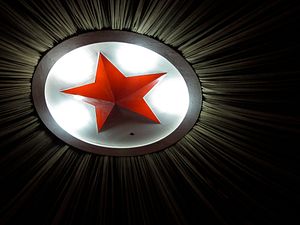In the first three weeks of January 2022 North Korea conducted four ballistic missile tests. The Biden administration was content to put North Korea on the back burner in 2021, but Washington may not have the luxury of keeping Pyongyang near the bottom of its priority list for much longer.
While North Korea has refrained from testing a nuclear weapon since September 2017, it has made significant advances in missile technology with an emphasis on relatively shorter-range systems that can threaten targets in East Asia. Two of the four 2022 tests so far were of a never-before-seen missile that featured a new type of warhead mounted atop a liquid-fuel rocket that is visually similar to but shorter than the Hwasong-12 ballistic missile.
North Korea claimed that the new missile’s warhead is a hypersonic glide vehicle (HGV) that uses small fins to conduct maneuvers while traveling through the atmosphere at very high speed. This is the second type of HGV tested successfully by North Korea. In September 2021, Pyongyang test launched the Hwasong-8, which has an HGV warhead shaped more like a wedge rather than the conical warhead of the new, unnamed missile.
North Korea’s interest in HGVs is unsurprising. From a technical perspective, HGVs are useful for defeating missile defense systems due to their unpredictable flight path. Since HGVs can maneuver, it is much harder for the defender to predict where the warhead will land and therefore harder to fire an interceptor in time. Kim Jong Un also announced that such capabilities would be a major focus of North Korea’s weapons industry in a landmark political speech to the eighth Party Congress in early January 2021, granting strong political backing and material support.
Since the collapse of the North Korea-U.S. summit at Hanoi in February 2019, North Korea and the United States have been locked in a diplomatic impasse. Neither the Trump nor Biden administration ratcheted up U.S. pressure on North Korea. Kim, for his part, has conducted ballistic missile tests but has refrained from testing nuclear weapons and missiles that could threaten U.S. territory. The Biden administration has repeatedly offered to meet with North Korean negotiators without preconditions. However, after the high-profile failure at Hanoi, North Korea has refused to engage with the United States unless it takes steps to demonstrate that renewed negotiations will be different.
Maintaining the current diplomatic stalemate is likely to become more difficult as North Korea improves its missile forces. Deterring a North Korean attack is relatively easy compared to coercing North Korea to give up its nuclear forces, but the requirements for deterrence are a moving target. If Pyongyang continues to improve its missile forces, Seoul will likely ask Washington to take steps to enhance its ability to protect against a more capable adversary. At one extreme end, this could lead to a redeployment of U.S. nuclear weapons in South Korea, which would likely deepen China-U.S. animosity and could spark a crisis with North Korea.
Other less controversial options could include deployments of more missile defense systems or greater U.S. support for advanced South Korean capabilities similar to the AUKUS nuclear submarine deal between the United States, United Kingdom, and Australia. Such an approach would prioritize maintaining the South Korea-U.S. alliance, but it also creates an action-reaction cycle that could make Northeast Asia more volatile in the long run.
The United States could try and force North Korea back to the negotiating table by ratcheting up economic and military pressure. The Trump administration tried this approach in 2017. While Trump did get a summit with Kim in 2018, the path there was very perilous and could have easily led to a war with a high chance of nuclear use. North Korea has repeatedly shown a willingness to meet U.S. pressure with pressure of its own so taking this path is likely to result in another crisis.
The Biden administration’s decision to respond to the second of January’s missile tests with new sanctions on North Korean individuals involved in the missile program was shortly followed by the third missile test of the month. This does not mean that a return to 2017 is likely, but Biden should be cautious about applying additional pressure as it is likely to beget North Korean escalation rather than bring it to heel.
Finally, the United States could take actions to address North Korea’s request for a demonstration of seriousness to restart diplomacy. The Moon Jae-in administration in South Korea appears willing to try this approach with its insistence on issuing a declaration to end the technically ongoing Korean War, but Moon doesn’t have much time left in office.
The United States should not give up on a diplomatic way to reduce the risk of North Korea’s nuclear weapons. If Seoul is willing to end the Korean War, the United States should do more to champion this course of action. Diplomacy comes with its own set of uncertainties and challenges, but both maintaining the status quo and increasing pressure will have more dangerous consequences.































